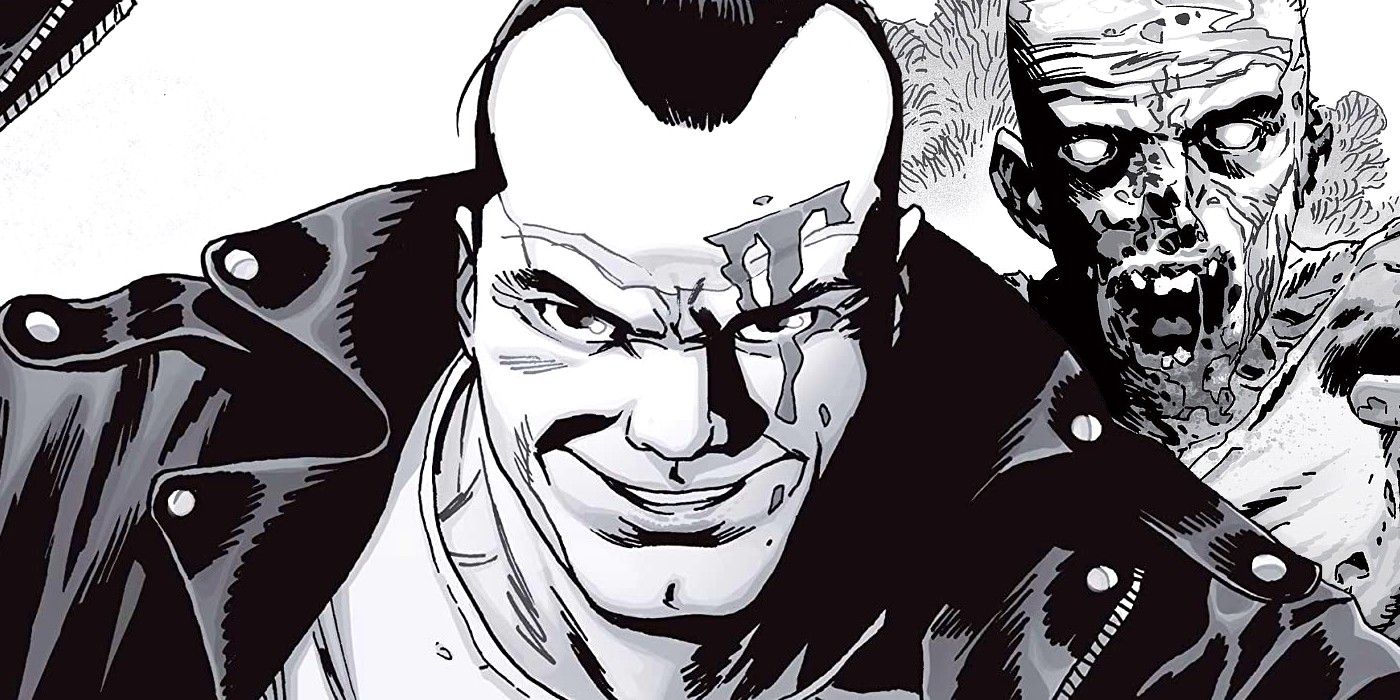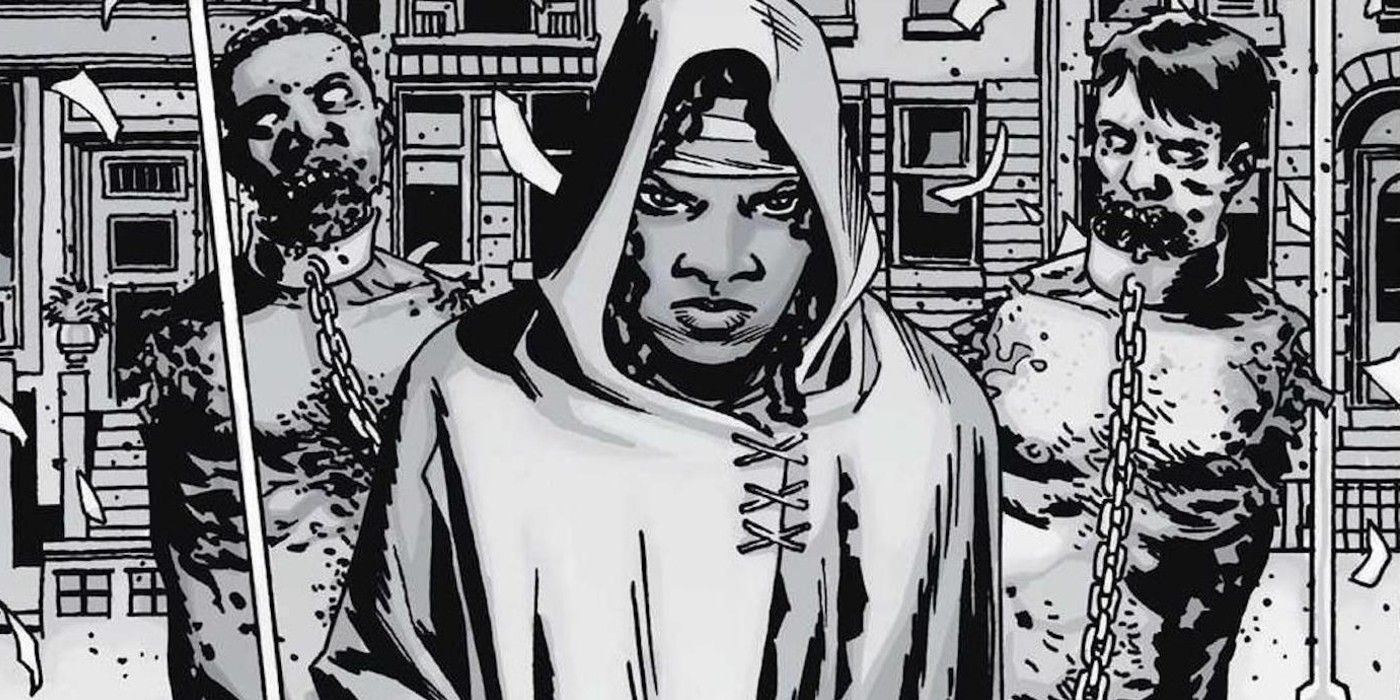
Unlike many other Image Comics titles, writer Robert Kirkman (Marvel Zombies, Invincible) and artists Tony Moore (Fear Agent, Battle Pope) and Charlie Adlard (Savage, Judge Dredd)’s The Walking Dead served the distinction of being published in black and white from its first issue in 2003 to its final issue #193 in 2019. But despite becoming a phenomenon, beloved by comics fans and with a hugely popular TV adaptation, the series never made the jump to publishing in color – not because it couldn’t, but because the black and white style was a conscious decision by its creators.
A zombie fan from a young age, Robert Kirkman brought his love of the undead genre to comic books, honoring not just traditional gore and narrative themes, but even the creative aesthetic of past greats. But despite being more ambitious than other, schlockier zombie comics on the stands, another unique element was needed to help the book stand out from its contemporaries. With October 2003’s The Walking Dead#1, Kirkman and the series’ initial artist Tony Moore introduced fans to the world of The Walking Dead in all its black and white glory.
Kirkman’s plans for the The Walking Dead, other than being “the zombie movie that never ends,” ended up being even more ambitious than originally intended. During the early development stages of the series, The Walking Dead was set to be a continuation of the late horror legend George A. Romero’s 1968 classic film Night of the Living Dead. Filmed in black and white, Night of the Living Dead was responsible for introducing mainstream audiences to the modern zombie genre and set the tone for everything which came after – an unprecedented feat that The Walking Dead would accomplish for the comic book market decades later. But while a shared continuity with Night of the Living Dead would not ultimately get past the rough stages, it was enough to birth the series’ black and white aesthetic.

Save for the series’ cover art, everything from characters, locations, clothing, and zombie guts were rendered colorless. But the decision to envision The Walking Dead in pure black and white did not only come from an homage to Night of the Living Dead, but from the freedom it provided in terms of depicting injury and violence. Due to the lack of color, the title was virtually allowed free rein for intense scenes that would have attracted more concern if depicted in vivid reds. Kirkman’s series has gradually developed into a comic book known for its extremes of gore and violence, and yet working without color has helped avoid a sense of sensationalism or needless excess.
The Walking Dead‘s black and white art came to mean many things for the series, giving it more creative freedom and tying it into the legacy that birthed it. By using the covers to establish color details about which fans might have been curious – such as hair color and zombie decomposition – the comic remained free to take the more atmospheric, more ambitious route, and found success anyway. For fans who are curious to see the world in color, there’s also the option of colorized reprints published after the series’ conclusion, but The Walking Dead‘s lack of color was never a weakness to be overcome, but rather one of the smartest decisions its creators ever made.





